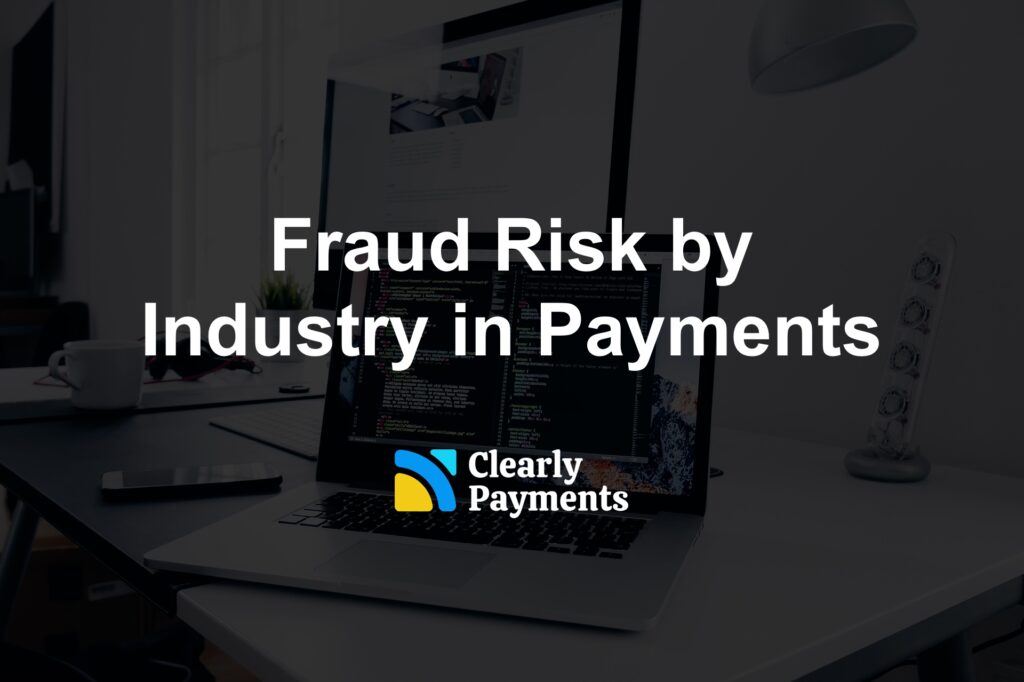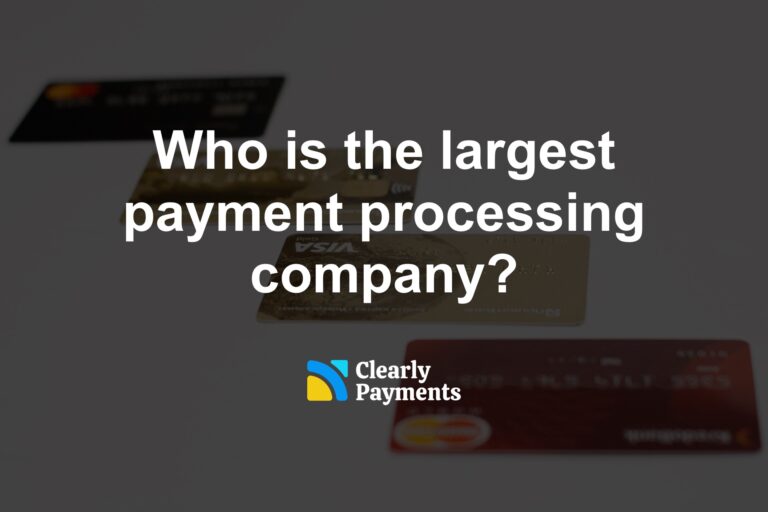Fraud in payment processing poses a threat to businesses across various industries. Each industry faces unique challenges and vulnerabilities.
This article covers the fraud risks and statistics associated with different industries, exploring the factors contributing to these risks and offering strategies to reduce fraud.
How Fraud Rate is Measured
The fraud rate in the context of credit card transactions is defined as the percentage of total transactions that are identified as fraudulent.
It is calculated by dividing the number of fraudulent transactions by the total number of transactions, then multiplying by 100 to express it as a percentage. For example, if a company processes 10,000 transactions and 100 of those are found to be fraudulent, the fraud rate would be calculated as follows:
Fraud Rate = (Number of Fraudulent Transactions / Total Number of Transactions) x 100
This metric is used for monitoring and controlling fraud within various industries, allowing businesses to evaluate the effectiveness of their fraud prevention measures and adjust them as needed.
Fraud Rate by Industry in 2023
Credit card fraud is a pervasive issue impacting various industries, each with unique vulnerabilities and estimated fraud rates. The table below highlights the 20 industries affected by credit card fraud, detailing their estimated fraud rates and the most common fraud types they encounter.
Industries such as e-commerce, gaming, travel, hospitality, retail, and fuel stations face the highest fraud rates, primarily due to card-not-present (CNP) fraud, skimming, and chargeback fraud.
| Rank | Industry | Fraud Rate | Most Common Fraud Type |
|---|---|---|---|
| 1 | Travel and Hospitality | 3.2% | Fake Bookings, Loyalty Program Fraud |
| 2 | Fuel Stations | 1.80% | Card Skimming |
| 3 | E-commerce | 0.93% | Card-Not-Present (CNP) Fraud |
| 4 | Retail | 0.90% | CNP Fraud, Return Fraud, Identity Theft |
| 5 | Financial Services | 0.90% | Account Takeover, Unauthorized Transactions |
| 6 | Entertainment | 0.80% | Ticket Fraud, Subscription Fraud |
| 7 | Telecommunications | 0.70% | Subscription Fraud, Unauthorized Access |
| 8 | Restaurants | 0.60% | Skimming, Chargeback Fraud |
| 9 | Automotive | 0.60% | Fraudulent Purchases, Financing Fraud |
| 10 | Logistics and Shipping | 0.60% | Fraudulent Shipping Orders, Cargo Theft |
| 11 | Grocery | 0.50% | Return Fraud, Counterfeit Card Use |
| 12 | Charitable Organizations | 0.50% | Donation Fraud, Phishing Scams |
| 13 | Government Services | 0.50% | Benefits Fraud, Tax Refund Fraud |
| 14 | Personal Services | 0.50% | Identity Theft, Unauthorized Transactions |
| 15 | Utilities | 0.40% | Payment Fraud, Identity Theft |
| 16 | Insurance | 0.40% | Fraudulent Claims, Identity Theft |
| 17 | Professional Services | 0.40% | Invoice Fraud, Unauthorized Payments |
| 18 | Education | 0.30% | Tuition Payment Fraud, Financial Aid Fraud |
| 19 | Real Estate | 0.30% | Mortgage Fraud, Fraudulent Rental Applications |
| 20 | Healthcare | 0.20% | Medical Identity Theft, Insurance Fraud |
The table above are estimates for North America. Fraud rates are extremely difficult to get 100% accurate, however they provide an overview of the fraud activity and risk in an industry.
An Overview of Fraud in Different Industries
Fraud is a pervasive issue that affects various industries, each facing unique challenges and vulnerabilities. From e-commerce to healthcare, the nature and frequency of fraudulent activities can vary significantly.
This section provides an overview of the fraud landscape across different industries, highlighting the most common types of fraud, estimated fraud rates, and the specific risks each sector encounters.
Retail Industry
The retail sector is particularly susceptible to payment fraud due to the high volume of transactions and the widespread use of credit and debit cards. According to a report by LexisNexis, the retail industry faces the highest fraud attack rate, with an average of 28 successful fraud attempts per month per business.
- Card-Not-Present (CNP) Fraud: This occurs when transactions are made without the physical card, often in e-commerce settings. In 2023, CNP fraud accounted for 81% of all fraud losses in the retail sector, amounting to over $4.5 billion.
- Chargeback Fraud: Also known as friendly fraud, this occurs when customers dispute legitimate charges to obtain refunds while keeping the purchased goods. Chargeback fraud increased by 23% in 2023, costing retailers $125 billion globally.
- Point-of-Sale (POS) Attacks: Fraudsters target POS systems to steal card information through methods such as skimming devices or malware. POS fraud incidents rose by 27% in 2023, highlighting the growing threat to physical retail locations.
To mitigate these risks, retailers can implement robust authentication measures, invest in secure payment gateways, and educate customers about secure online shopping practices.
Financial Services
The financial services industry faces a high risk of fraud due to the nature of its operations and the sensitive information it handles. According to the Association of Certified Fraud Examiners (ACFE), financial institutions account for 16.8% of all reported fraud cases.
- Account Takeover (ATO): Fraudsters gain unauthorized access to customer accounts to steal funds or conduct illicit transactions. ATO fraud increased by 72% in 2023, with losses totaling $11.4 billion.
- Phishing and Social Engineering: Attackers deceive employees or customers into divulging sensitive information, such as login credentials or personal identification numbers (PINs). In 2023, 83% of financial institutions reported an increase in phishing attacks.
- Insider Threats: Employees with access to sensitive information may misuse their positions to commit fraud. Insider fraud accounts for 15% of fraud losses in the financial sector, with an average loss of $200,000 per incident.
Financial institutions can reduce these risks by adopting advanced fraud detection systems, conducting regular security audits, and providing ongoing training for employees on recognizing and preventing fraud.
Healthcare Industry
Healthcare organizations are increasingly targeted by fraudsters due to the valuable personal and financial information they possess. The National Health Care Anti-Fraud Association estimates that healthcare fraud costs the industry $68 billion annually.
- Medical Identity Theft: Fraudsters use stolen patient information to obtain medical services, prescriptions, or insurance reimbursements. In 2023, there were over 2.3 million cases of medical identity theft, resulting in $41 billion in losses.
- Billing and Coding Fraud: Healthcare providers may intentionally submit false claims or overcharge for services to receive higher reimbursements from insurers. Fraudulent billing accounts for approximately 10% of total healthcare spending, equating to $272 billion annually.
- Data Breaches: Cybercriminals target healthcare systems to steal patient data, which can be sold on the dark web or used for fraudulent activities. Healthcare data breaches increased by 55% in 2023, affecting over 29 million records.
To combat these risks, healthcare providers should implement stringent data protection measures, regularly monitor billing practices, and educate staff on recognizing and reporting fraudulent activities.
Travel and Hospitality
The travel and hospitality industry is vulnerable to fraud due to the frequent use of online booking systems and the high value of transactions. The travel sector experiences an average fraud rate of 3.2%, significantly higher than other industries.
- Fake Bookings: Fraudsters create fake reservations using stolen card details, leading to chargebacks and revenue loss. In 2023, fake bookings resulted in $1.7 billion in losses for the travel industry.
- Loyalty Program Fraud: Attackers exploit vulnerabilities in loyalty programs to steal points or rewards, which can be redeemed for goods or services. Loyalty fraud increased by 89% in 2023, costing the industry $2.4 billion.
- Phishing Attacks: Cybercriminals target customers with fake booking confirmations or promotional offers to steal personal and payment information. The travel industry saw a 44% increase in phishing attacks in 2023.
To mitigate these risks, businesses in the travel and hospitality sector should enhance the security of their booking systems, monitor loyalty programs for suspicious activity, and educate customers about phishing scams.
E-Commerce
The e-commerce industry is a prime target for fraud due to its reliance on online transactions and the anonymity of the internet. According to Juniper Research, e-commerce fraud losses are expected to reach $48 billion by 2023.
- Account Takeover (ATO): Fraudsters hijack customer accounts to make unauthorized purchases or steal stored payment information. ATO incidents in e-commerce increased by 15% in 2023, causing $3.4 billion in losses.
- Return Fraud: Fraudsters exploit return policies by returning stolen or counterfeit goods for refunds or store credit. Return fraud costs e-commerce merchants $24 billion annually, accounting for 8% of total returns.
- Promo Code Abuse: Attackers use stolen or fraudulent promo codes to obtain discounts or free items, causing financial losses for businesses. Promo code abuse surged by 29% in 2023, leading to $1.7 billion in losses.
E-commerce merchants can reduce these risks by implementing multi-factor authentication, monitoring for unusual account activity, and setting clear return policies with robust verification processes.




